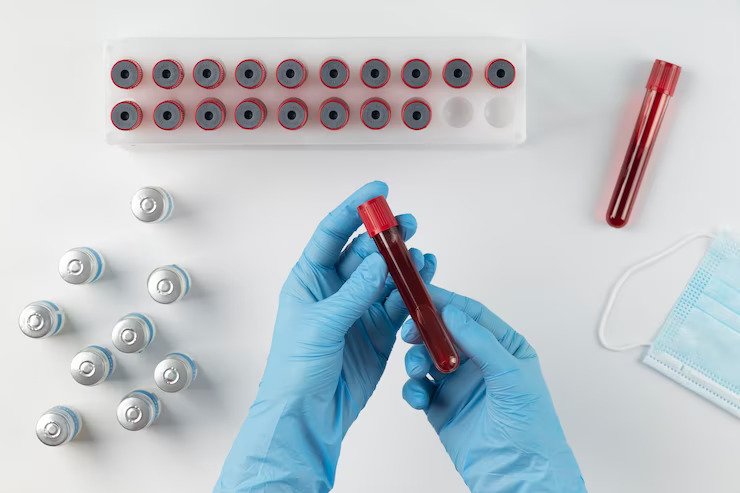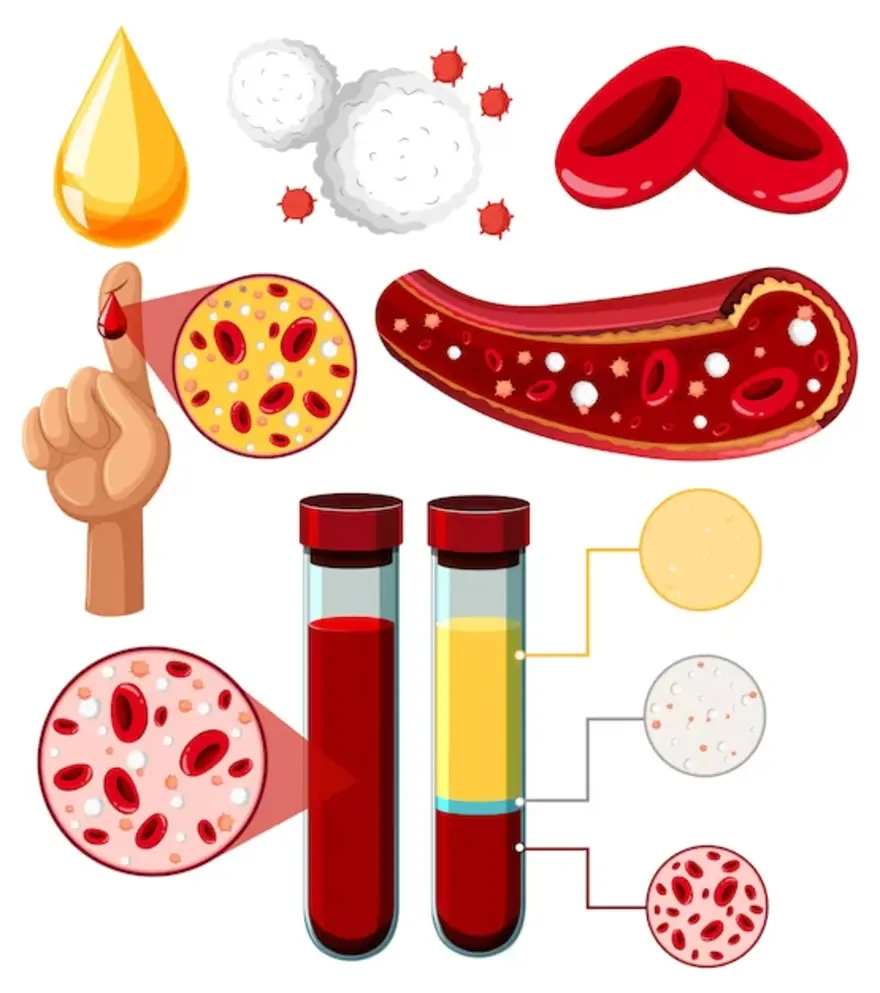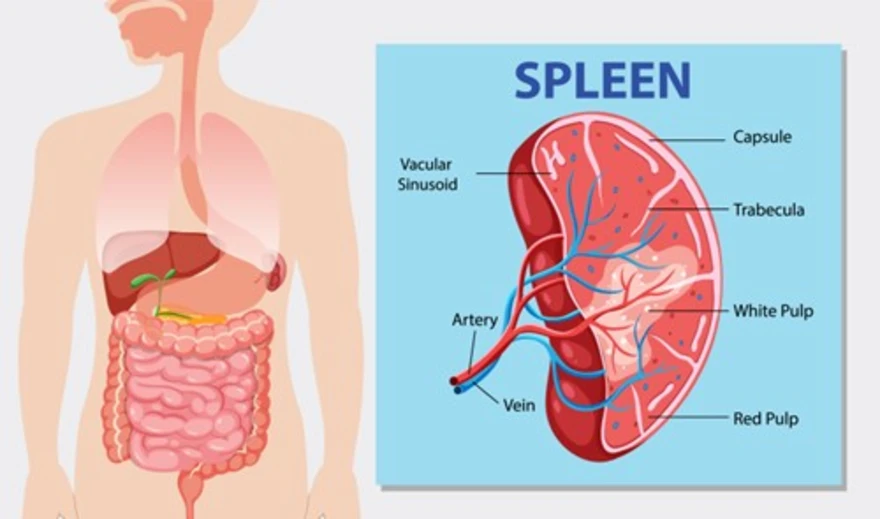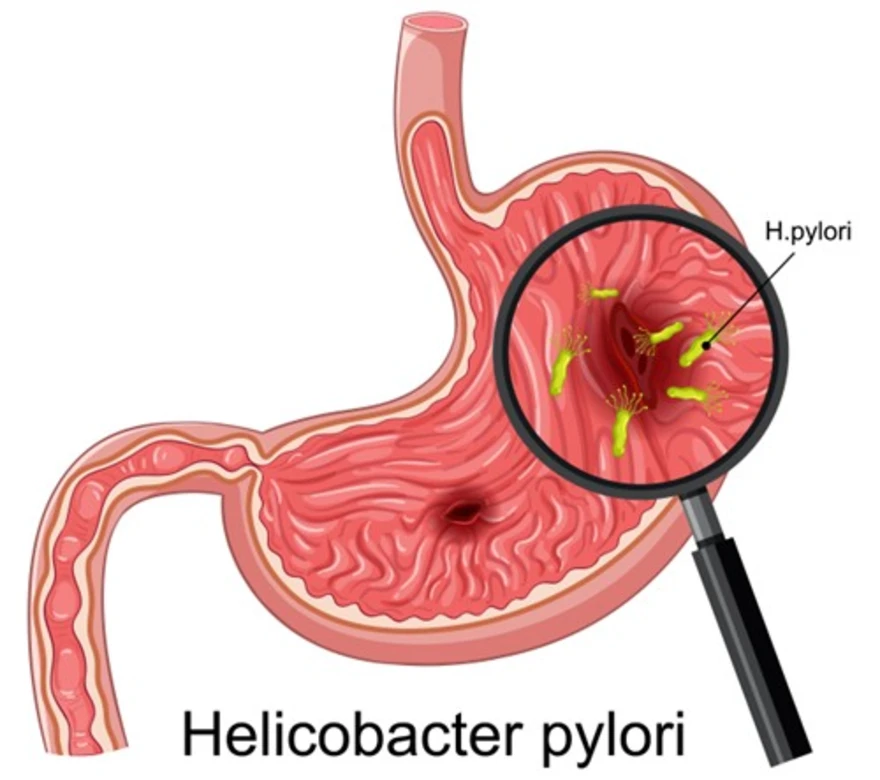Preventive Healthcare
Hemoglobin Test: What it is, Normal Range, Procedure & Results

Table of Contents
- Why is a Hemoglobin Test Necessary?
- Parameters for a Blood Test for Hemoglobin
- How is the Hemoglobin Test Carried Out?
- What Dangers Could a Hemoglobin Test Pose?
- The Significance of the Test Findings
- Hemoglobin Test Results Variations
- What Does Having Low Hemoglobin Mean?
- What Does Having High Hemoglobin Mean?
- What Kind of Follow-Up is Needed?
The quantity of hemoglobin in the blood is measured using a hemoglobin test or a Hb blood test. The component that gives blood its red colour is called hemoglobin. It is a kind of protein found in red blood cells that carries oxygen to vital body organs like the lungs and tissues. Additionally, hemoglobin aids in returning carbon dioxide from different bodily areas to the lungs. If the hemoglobin level is low, there is probably a disease or illness present.
When hemoglobin levels are low, the body may be feeble because it has less energy to perform correctly. If there are any problems with your health, your doctor may recommend a blood test for hemoglobin. However, most of the time it is generally part of a routine check-up. The disease can have several causes, including poor diet, chronic illness, bleeding, vitamin deficiencies, smoking, and extreme dehydration.
Why is a Hemoglobin Test Necessary?
As part of the entire Complete blood count (CBC) test, your doctor could request a Hb Blood Test. A CBC test also analyses white blood cells and platelets, two other significant blood constituents. A blood problem or other underlying conditions may be indicated by higher-than-normal levels of any of these cells.
For the following additional reasons as well, your doctor might prescribe a Hb test:
- if sickle cell disease runs in your family.
- A disease that has infected you.
- If the amount of iron in your diet is insufficient.
- After surgery, if you lose a lot of blood.
- You are pregnant.
- You have a health problem, which could also have an impact on your Hgb values.
So, it’s very necessary to maintain a haemoglobin normal level.
Parameters for a Blood Test for Hemoglobin
For the Hb Blood Test, you are not required to fast particularly. If your doctor intends to check the composition of your blood at the same time, you could need to fast and abstain from food and beverages with calories for roughly 12 hours. In either case, make sure to be well-hydrated.
How is the Hemoglobin Test Carried Out?
Your medical professional will draw blood from your hand or arm. They can also prick their fingers to draw blood. Infants or newborns may be supported with a heel stick.
Your healthcare provider will first wipe alcohol over your skin. To help the blood flow more easily, they'll wrap a rubber band around your upper arm and instruct you to create a fist. Then, a tiny needle will be inserted into a vein. When the needle is inserted, you can experience a sting. A vial will receive your blood as it flows from the needle. The vial will then be sent to a lab for analysis by your provider.
What Dangers Could a Hemoglobin Test Pose?
Blood testing doesn't carry a lot of dangers. During the blood draw, you can feel a little discomfort, and the site might seem red or puffy for a few days thereafter. Usually, these symptoms disappear on their own.
The Significance of the Test Findings
A Hb blood test can determine whether your levels are excessively high or too low, as in the case of anemia. It may also demonstrate the severity of your disease. It is unable to identify the cause of your elevated levels. Your medical doctor will make a diagnosis based on other test results in addition to your hemoglobin levels.
Hemoglobin Test Results Variations
Age and gender can both have an impact on your hemoglobin normal levels. These Hgb levels are regarded as being within the usual range.
Category Hgb Level (g/dl)
Infants 11-18
Young Children 11.5-16.5
Adult males 13-16.5
Adult females 12-16
For men, Hgb levels below 13 g/dL are regarded as low. Hgb values under 12 g/dL are regarded as low in females who are not pregnant. And the hemoglobin normal level ranges from 12 – 17.5 g/dl
This threshold may alter under specific circumstances and may vary based on the lab. Always verify the reference range for your lab. Age can also affect these levels in children, especially in newborns under six months.
What Does Having Low Hemoglobin Mean?
Anemia, or hemoglobin levels that are below normal, may indicate that your body isn't making adequate red blood cells. Low levels could also mean that your red blood cells are degrading more quickly than they are being produced (hemolytic anemia).
Hemoglobin concentrations also fall as a result of chronic (prolonged) blood loss. One of the most frequent causes of anemia is this.
- Low hemoglobin levels could indicate:
- an absence of iron.
- a lack of nutrients (for example, vitamin B12 or folic acid).
- cancers that damage the bone marrow or blood.
- Thalassemia.
- kidney illness
- liver illness.
- Sickle cell illness
- Autoimmune conditions.
- bleeding from your gastrointestinal system, menstrual bleeding, surgery, injury, or blood loss.
What Does Having High Hemoglobin Mean?
There may be too much hemoglobin in your blood due to some conditions that increase the number of red blood cells. Your hemoglobin may be high if you're dehydrated since your red blood cells are overrepresented in your blood volume.
High levels of hemoglobin could indicate:
- Vera Polycythemia
- inherited cardiac problems.
- some renal illnesses, such as kidney cancer.
- lung conditions such as pulmonary fibrosis and chronic pulmonary obstructive disease (COPD).
What Kind of Follow-Up is Needed?
If your doctor thinks there might be an issue, they will talk to you about the results. Depending on the outcomes, they can request more tests. The course of treatment will depend on the nature of your elevated levels. Discuss your provider's treatment options with them. If you're getting therapy for a blood condition, you might need to get regular hemoglobin testing.
Conclusion
Medical professionals may use a hemoglobin test as part of their routine medical procedures to assess a patient's health. This test measures the body's red blood cell levels, which are a key sign of how healthy a person is. Humans can have high or low quantities of hemoglobin. They are all dependent on particular elements that have been covered throughout this article.


























